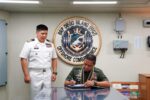Strategic Context and Rationale
In response to recurring Chinese vessel incursions near the disputed Senkaku Islands, Japan has prioritized upgrading its maritime communications. The Japan Coast Guard plans to deploy SpaceX’s Starlink service across its large patrol vessels in fiscal year 2025 to enhance connectivity resilience and encryption capacity.
Deployment Timeline and Scale
- As of March 2025, 12 large patrol vessels are already equipped with Starlink, serving as a backup to conventional satellite links.
- In FY 2025 (ending March 31, 2026), 66 large vessels will be equipped, with another 16 joining in FY 2026. Four hydrographic survey vessels will also be upgraded.
Budget and Technological Enhancements
A ¥4.26 billion (~USD 29 million) investment covers Starlink installation, enhanced-encryption communication systems, and cyberattack research.
Strategic & Security Significance
Starlink’s low-latency LEO network enhances resilience to weather disruptions and electronic interference, offering redundancy for emergency communications.
Technical Specifications: Starlink Maritime Capabilities
- The Starlink Performance Kit is engineered for robust maritime deployment, enclosed in aluminum and rated to withstand extreme conditions: wind speeds over 270 kph (170 mph), temperatures from –40 °C to 60 °C, corrosion, high vibration, and high-pressure washing.
- It supports both AC and DC power, features IP68/IP69K waterproofing, carries a 3-year warranty, and is built for a 10-year operational lifespan.
- Connectivity today reaches up to 400+ Mbps download, with gigabit speeds expected in 2026 without requiring hardware replacement.
These specs underline why Starlink is a compelling option for continuous and resilient communications in demanding maritime operations.
Parallel Initiatives: Japan MSDF and Starlink Trials
- The Maritime Self-Defence Force (MSDF) began trialing Starlink on two training ships—Kashima and Shimakaze—with speeds around 220 Mbps, enabling multiple simultaneous video streams and vastly improved crew connectivity.
- The MSDF plans to scale Starlink across about 90% of its surface vessels within three years.
This aligns with broader Japanese defense trends, where both civilian and military maritime services are leveraging commercial LEO satellite networks for modern, resilient communication.
Broader Defense and Civil-Military Context
- Although legally civilian, the Japan Coast Guard holds quasi-military responsibilities and can be placed under Defense Ministry command during emergencies.
- Multiple satellite communication channels are part of a space resilience policy, acknowledging China’s and Russia’s ASAT (anti-satellite) threats.
Future Outlook and Risks
Potential risks include dependency on private infrastructure (SpaceX) and associated cybersecurity or geopolitical vulnerabilities—necessitating robust safeguards.
By fiscal 2032, at least 85 large patrol and survey vessels are expected to be equipped with Starlink.








